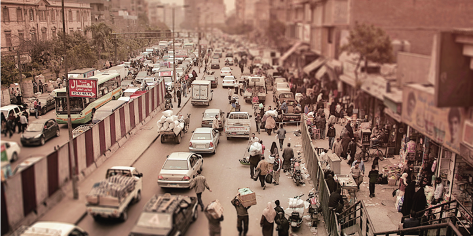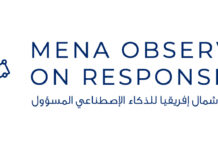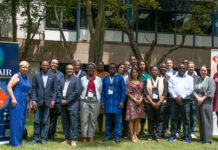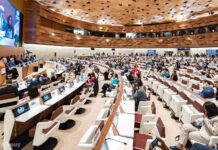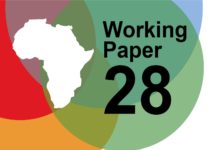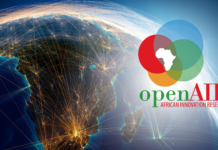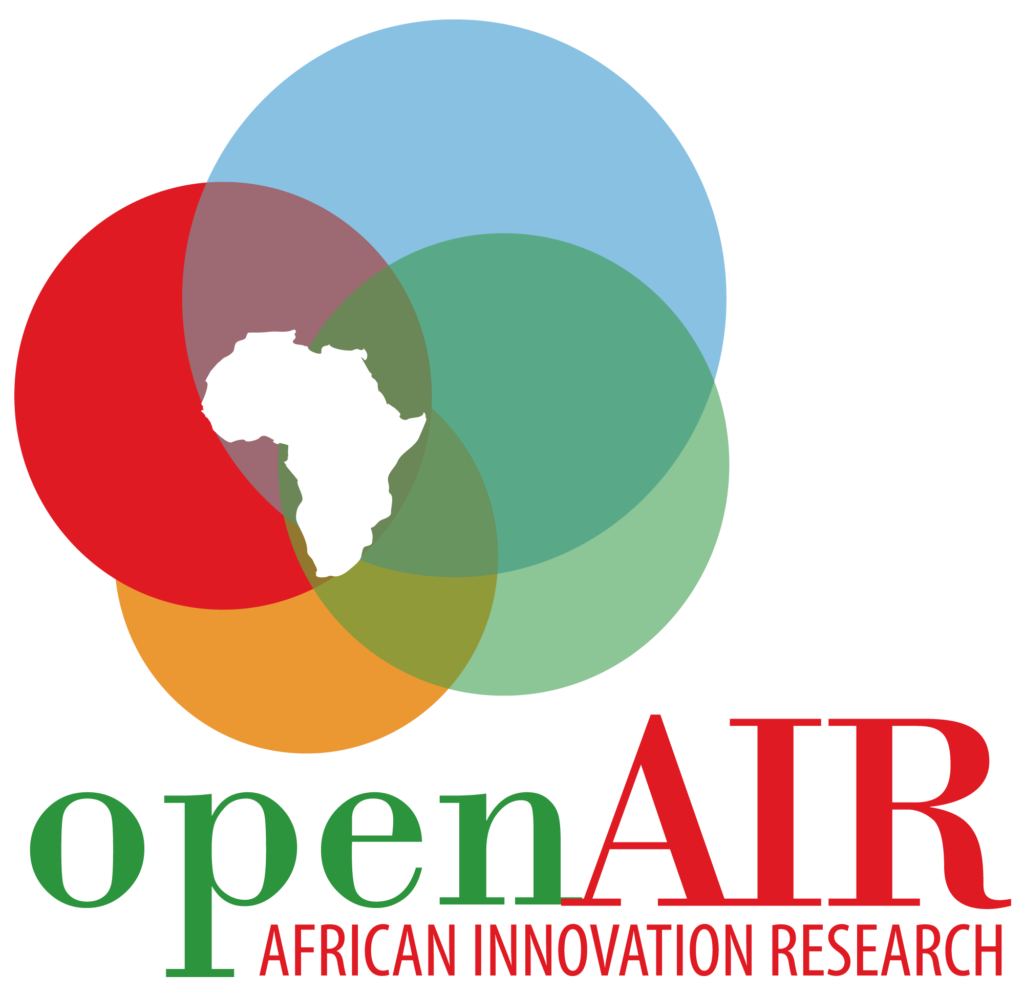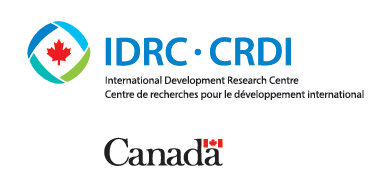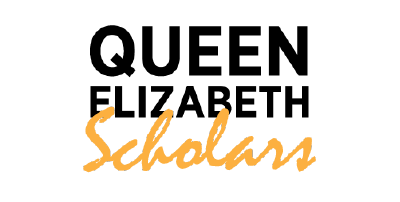By Nagla Rizk
This article was originally published by Medium
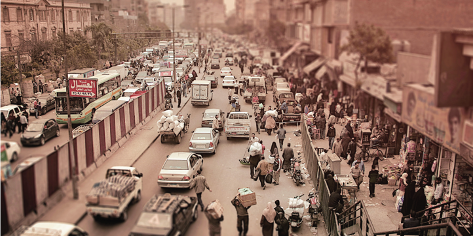
“I wish they let us move and to end the curfew, so we go to work. God will make whatever He wants. We will not die except by the will of God, even death has cost us dearly.”
Virus and vulnerability
As COVID-19 attacks individual physical vulnerabilities, it fiercely strikes at the heart of societies’ social and economic frailties. In Egypt, informal communities have been severely impacted. In the context of the country’s multifaceted inequalities, the choice between lives and livelihood for those living from hand to mouth is no longer binary. Leaving home for work to relieve hunger means facing a high probability of illness, possibly death, and ultimately hunger for dependents who have nothing to fall back on. It is a cruel vicious circle, an ethical dilemma with a dramatic twist: hunger is imminent and the question is how soon. The broader question becomes how research can inform policy to mitigate this lose-lose scenario.
Egypt’s economy – multilayered inequalities and past legacies
Inequality in Egypt is complex: multifaceted, multi-layered, and multidimensional. It extends beyond income inequity to encompass inequality of opportunity rooted in discrepancies in access to education, employment, health, sanitation, housing and active citizenry. Inequalities exist along dimensions of gender, geography, ethnic and social background. These analogue divides couple with digital inequities and feed into intertwined developmental inequalities that painfully cut across lives. Today, the poverty rate in Egypt is twice what it was in 2000, as one in three people lives on less than 1.45 dollars a day and more than 6 million people live on less than a dollar a day.
Such is the legacy of decades preceding the Arab Spring, dating back to the neoliberal Economic Reform and Structural Adjustment Program led by the World Bank and the International Monetary Fund in the 1990s. The objective of these measures was to draw foreign direct investment to drive targeted economic growth. Along with seemingly high growth rates (7 percent in the nineties, 5.1 percent on the eve of the Arab Spring) came swelling pockets of poverty, unemployment, and informal work.
For decades, Egypt has continued to rely on external sources of finance: oil, the Suez Canal, tourism, and remittances of workers in the Gulf. The latter three alone have contributed to 14.5 percent of GDP. This is a vulnerability that has continued to expose the economy to shocks. The limited economic diversification has restricted the growth of job opportunities, creating an unemployment that is structural and sticky. While the officially announced unemployment rate is only 9 percent, unemployment is significantly high for women, the educated, and youth, lately recording 22 percent, 21 percent and 31 percent, respectively out of the relevant cohorts in the labor force. Youth unemployment is especially worrying as 60 percent of the population are under 30 years old, with 27 percent of them not being in education, employment, or training.
Informal livelihoods
Against this backdrop, the past few decades reveal a bourgeoning of informal livelihoods. Classified as those who work with no contract and no social security, informal workers constitute more than 60 percent of Egypt’s labor force and contribute to 40 percent of its GDP. This means that close to two thirds of the country’s workers earn their living on a precarious basis, have no access to social security and operate outside state-sanctioned laws and parameters, especially labor laws. Excluding those in agriculture, the share of informal workers in the labor force is 53 percent.
In parallel, informal dwellings have mushroomed over the last decades, especially in urban areas. Informal dwellers constitute more than half of Cairo’s residents (some living in the city of the dead), 40 percent of Alexandria’s residents, with higher shares in remote parts of the country. Indeed, sixty percent of Egypt’s urban areas are classified as “unplanned” as they do not follow building regulations.
Unhealthy contexts
Health and sanitary conditions in informal dwellings are dismal. They are densely populated, suffer from pollution and lack running water, electricity, sewage and sanitation. According to Egypt’s official statistics, 8.3 million people do not live in an apartment, but in a room, kiosk, shack or tent; 6.2 million do not have a tap inside their dwelling, and 8.4 persons do not own a private bathroom or kitchen. In the area of “zabaleen” (garbage collectors), where garbage is sorted and recycled, people live with high incidence of disease and infection, especially Trachoma and Hepatitis. Throughout, healthcare centers are absent or of poor quality.
These underserviced dwellings fall at the lower end of a national health system that itself is problematic. Even though the 2014 constitution stipulated 3 percent of GDP as a minimum for health expenditure, the actual figure has varied between 1.2 and 2 percent depending on the source and compares to the global average of 7 percent. While the global percentage share of public vs. private health expenditure is 74-26 percent, Egypt’s is a lopsided 35-65 percent. The individual’s out-of-pocket expense on health reaches 62 percent of private expenditure, compared to the global figure of 19 percent.
The quality of healthcare varies considerably between public and private hospitals. Public hospitals are crowded, provide poor quality services, and offer low pay and poor working conditions for doctors and health workers. Better quality private hospitals and healthcare centers tend to gravitate around large cities and affluent neighborhoods as opposed to rural areas and urban slums.
Enter COVID-19
COVID-19 hit Egypt, first shyly in February, then became a full reality in March. On March 15, schools were closed, and a partial lockdown was announced, with an evening curfew against a fine of 4000 pounds (250 dollars). When positive cases are detected (always in poor areas), the neighborhood is cordoned off by the police. As of June 17, the officially announced total number of cases approached 50,000 with the numbers of new cases and new deaths increasing daily against an overwhelmed and ill-equipped healthcare system. Throughout, the call has been for people to stay home, and for education and work to be conducted online.
How have informal livelihoods fared?
Informal workers fall into three categories: freelancers, small family enterprises, and workers employed informally by the formal sector. Beyond employment, a variety of direct and indirect linkages exist between the informal and formal sectors. These include transactions with services and feeding industries like handicrafts, woodwork, intermediate goods and inexpensive parts. Informal service providers such as domestic helpers, caretakers and drivers are a reality in Egypt’s everyday life.
Historically, Egypt’s informal sector has been agile, and has in times of crisis stepped in to fill existing gaps. Indeed, it has cushioned Egypt’s economy against two recent shocks: the 2008 financial crisis and the 2011 uprisings. It offered work for those laid off from the formal sector, fulfilled immediate needs of customers and businesses, and continued to rely on supply chains of cheap Chinese products. It kept the whole of Egypt afloat.
Not this time. With the hit from COVID-19, the informal sector is unable to fulfill its important role. First came the blow from reduced demand in the formal sector as industry was dealt a harsher shock than ever before, dragging the informal sector along with it. The unprecedented impact to tourism and the Suez Canal, along with the closure of businesses, killed informal transactions such as handicrafts, bazars, and the like. School closures nulled the need for corner stationary shops and the lockdown eliminated the need for parking attendants, a necessity in the streets of Cairo and Alexandria. Needless to say, informal workers in formal businesses were the first to be laid off.
The closure of Gulf countries and the hit to remittances due to the oil price crash meant a bigger burden on low income families, returning migrants. and swelling pockets of informal labor.
Next came an additional blow to demand from traditional employers of informal workers out of fear of infection. Access to work was denied for domestic helpers, drivers, workers in informal nurseries, maintenance workers, carpenters, tailors, etc. First-hand testimonials provide chilling stories of how these workers were shunned.
On the supply side, informal workers have been unable to function as their own labor was being restricted by illness, curfew, lockdown and/or cordoning of neighborhoods. The materials they use and the products they trade in were restricted by the cut in the global supply chains.
And this is where the ethical dilemma stings: caught between demand and supply shocks, informal workers seek livelihood while facing a deadly health hazard, unarmed.
State response: from hand-to-mouth living to hand-to-mouth relief
The state announced monthly cash handouts in the amount of 500 pounds ($30) to be disbursed to informal workers over 3 months. The state also expanded the standard safety net initiatives of $20-30 a month: ‘Takaful’ (solidarity) for households with children in schools (additional $10 per child), and‘Karama’ (dignity), targeting the elderly and the disabled.
Eighteen million new family ration cards were issued, each offering food for about 4 dollars a month. Food cartons came from the state, and donations came from civil society, food banks, social clubs, actors and soccer players, communities, and some corporates. As more than 50 percent of household expenditure of Egypt’s poor goes to food, this was hand-to-mouth relief to shoulder hand-to-mouth living.
Reality check
Notwithstanding the above, a few points remain important. First, the cash handouts targeted 2.5 million informal workers. These represent 12.5 percent of the total 20 million workers in the sector. Moreover, if the handouts were to reach everyone targeted, the total would amount to 3.75 billion pounds, which is 3.75 percent of a total of 100 billion pounds (about 6.3 billion dollars) announced by the state to fight COVID-19. This sharply compares to formal sectors like the stock exchange and tourism, set to receive the lion’s share of the fund: 20 percent and 20-50 percent (depending on the source), respectively.
Second, the application form for the handout and information on safety nets were posted online. More than half Egyptians do not have Internet access, cybercafes are expensive and Internet infrastructure is weak. Moreover, 26 percent of Egyptian women and 14 percent of men are illiterate. In practice, these forms were filled out by neighbors and civil society groups who stepped in to help applicants, especially women. One civil society representative confirmed that out of the 120 women served by his group, only one actually received the handout.
Along the same lines, to ensure better hygiene and within the move towards digital transformation, the government encouraged the use of smart cards at automated teller machines for safety net imbursements. In Egypt, 67 percent of the population rely on cash, 33 percent are banked, 3.3 percent have credit cards and 25 percent have debit cards. The latter are typically the rich and the educated. State discourse needs to be cognizant of reality, find targeted beneficiaries via the right data, and take gradual and sensible steps to achieve objectives.
Third, marginalized groups are invisible in the national database. ‘Data blindness’ excludes communities from the radar of state relief. Only those with “irregular work” on their ID’s qualify for the handouts to informal workers; those with “no work” do not. Those who live on borrowed electricity in slums will not have the utility bill required for safety net support. The same applies to divorced or separated women living in dwellings registered in the name of their absent ex-partners. As Takaful targets households with children in school, childless women who live alone will not qualify. Indeed, women were invisible altogether in applying for the recent handout as the form included only male type work categories (carpenter, welder, etc.) with no category allowed for work typically done by women (domestic helper, caretaker, cleaner, etc.). This gender bias and other data blurs serve to further marginalize informal groups.
Role of research
Informal communities stand the risk of exclusion by data blindness that keeps them off the radar of national statistics. Marginalization can also come from ‘data blur’ as aggregates cloud out granulations only revealed by disaggregation. The struggle of Egypt’s informal communities amidst the pandemic highlights the need for a sharp lens that finely captures all data pixels to properly inform inclusive development policies.
Better capturing realities of informality could involve novel grounds-up data collection methods that harness context specific appropriate technologies, such as mobile phones and applications like whatsapp. In previous research within the Open Data for Development Network (OD4D), we at the Access to Knowledge for Development Center (A2K4D) employed such data collection methods to capture nuanced data on informal transport networks that characterize Cairo’s Ring Road, a major highway connecting the city. This included using mobile phones to capture pictures that document informal stops for microbuses and tuk tuks.
As the founding node for OD4D for the Middle East and North Africa (MENA), we at A2K4D have been engaged in research and advocacy in the area of open data, AI and inclusion, and have done collaborative work with partners from the Open African Innovation Research Network (Open AIR).
Earlier, we participated in NoC’s AI and inclusion symposium in Rio de Janeiro 2017, and are happy to further our partnership with NoC colleagues as together we stand to benefit from the diversity of the network and our ability to engage in collaborative and comparative research for the common good.
Overall, I have been involved in a series of work on open data, AI , gender and development, and am currently developing research on responsible AI and gender inclusion in MENA, specifically targeting women’s invisibility in data and algorithms. In the present context, I propose a large scale collaborative research initiative on inclusive data for development, targeting informal communities with attention to women. Research would a) identify spots of data blindness and areas of data blur, b) suggest means of rectifying the situation and novel data collection methodologies to ensure visibility for all and c) propose tools for utilizing the better data to improve health, education and skill development for sustainable livelihood beyond safety nets and hand-to-mouth relief. This comes as part of the larger role of research to inform policies targeting development as dignity, and looks at means of mitigating analogue and digital inequalities for purposes of inclusion.
A final word
COVID-19 has exposed the frailty of Egypt’s socio-economic construct. It has jeopardized informal communities’ lives and livelihoods, simultaneously. This raises an ethical dilemma that forces us to question our moral standards, take stock of our social contract and rethink our priorities. As the virus adds insult to injury, it reminds us of the true meaning of development as dignity. After all, the spark of the Arab spring came from Mohamed Bouazizi, a Tunisian street vendor, who in despair, set himself ablaze.
This essay is part of the “Global Perspectives and Local Realities: An Evolving Essay Series Exploring Stories of COVID-19 in Real-Time”, from The Global Network of Internet & Society Centers (NoC) of which the Access to Knowledge for Development Center (A2K4D) is an active member. The essay series aims to support the sharing of local narratives from different parts of the globe, with perspectives on how the COVID-19 crisis may impact research, technology and policy making for inclusion in such turbulent times. The series is co-edited by Amar Ashar from the Berkman Klein Center for Internet and Society, Harvard University and Nagla Rizk, Professor of Economics and Founding Director, Access to Knowledge for Development Center (A2K4D). The essays are hosted on the Medium platform. You can also find a PDF version of the essays here.

